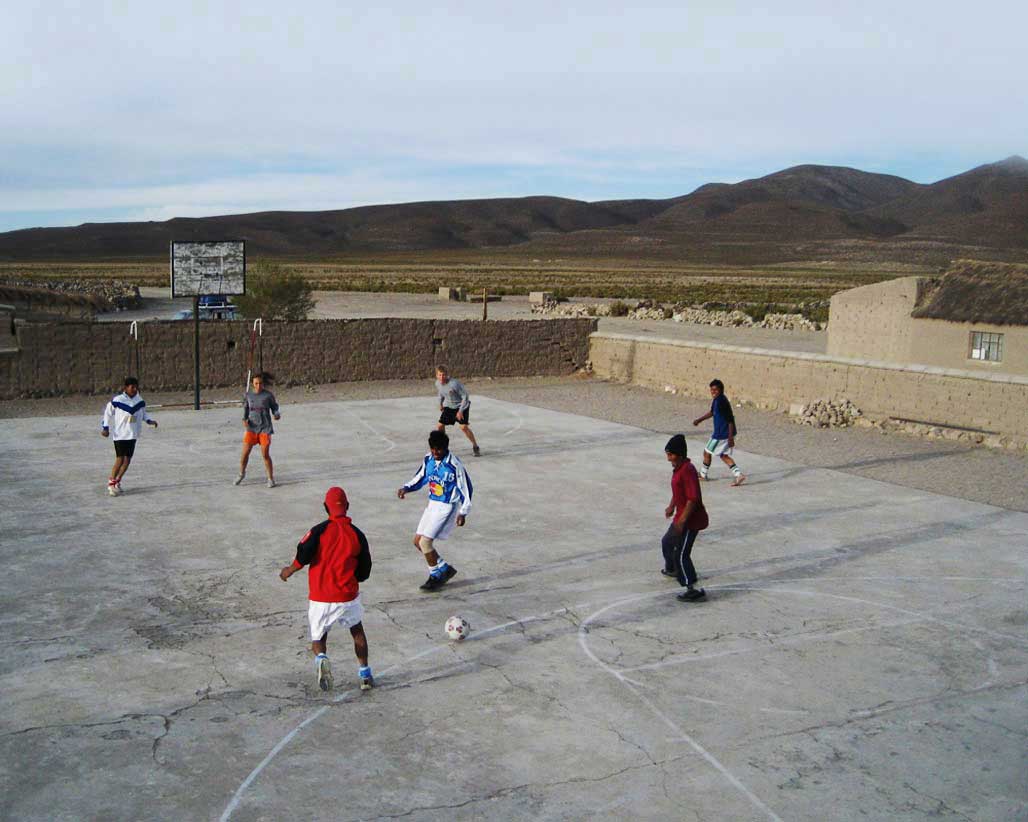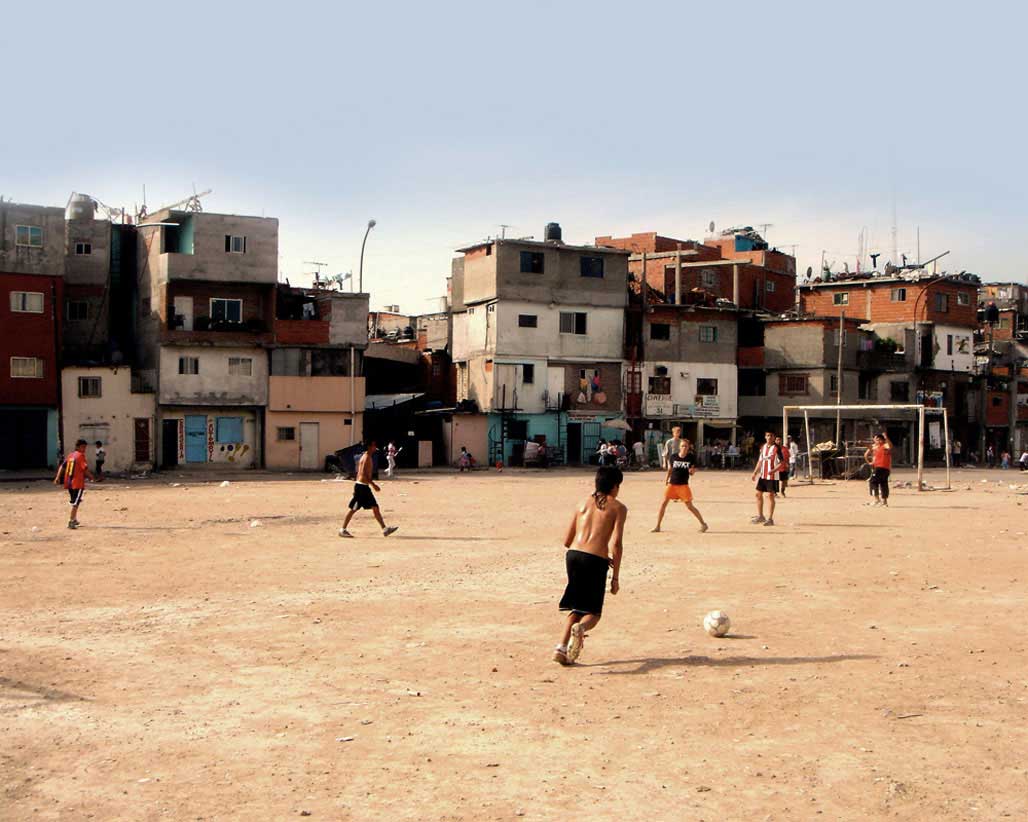San Pedro Prison sits behind San Pedro Plaza-a bustling square in the center of La Paz. Couples sit on benches around a fountain, kids chase futbol pelotas in the grass, and women set up stands for the Thursday through Sunday bread market. Our hostel is on the side of the square opposite to the prison.
At the infamous San Pedro Prison, the inmates are in charge. Though the guards patrol the outside, they do not enter the inside. Within the high walls, San Pedro inmates run their own society. There are wives and children, market stalls, and men selling ice cream, toy trinkets and cocaine. Like the outside world, you need money to get by. Even cells must be bought-if you have no money, you sleep beneath the starry sky.
Our first morning in La Paz, we sit on a bench and watch the gate of the prison and the guards who surround it. It’s hard to find the nuances of language to convince an armed guard to unlock the gates for you and let you wander in with your video camera.
Carrying our snazzy postcard, we stroll up to the men with green uniforms and guns, attempting to explain the merits of our project and why the San Pedro inmates would want to be a part of it.
We are not outright sent away-we feel encouraged. Speaking enthusiastically, he points us to a side door where we are to talk to a director. A man at this door does outright send us away. He chases us out as he speaks in fast Spanish we can’t fully understand…though we do make out something about the US Embassy.
Dispirited but not defeated, we take a cab to the US Embassy. While things are often closed on Saturdays and Sundays, sometimes even Mondays or Fridays, nothing is ever closed on a Wednesday…except, we discover, the US Embassy. Apparently, if you lose your passport or have your child abducted on a Wednesday, you must wait until Thursday.
So we return to our hostel and continue to gaze at the prison across the square. We wander downstairs to the Internet Café and spend enough time researching to make good friends with the owner. He shows us pictures of himself dancing in traditional clothing and we tell him about our desire to play futbol inside San Pedro. At this, he walks to the doorway, whistles at some men in uniform, and gestures them toward us. Five minutes later, we are being escorted by soldiers to the director’s office.
The director writes down directions to the Bolivian Ministry of Prisons on a pink piece of paper. “You need to speak to Alejandro. If he gives you permission, you may talk to the prisoners.” He tells us, “It is difficult, but not impossible.”
At 8am, we sit at a long conference table and find out Alejandro (who has an awesome scar running the length of his face) is an avid futbol player. Within fifteen minutes, we have permission. “But,” he clarifies. “You must talk with the prisoners-they decide.”
The following day, three elected prison leaders listen with rapt attention as Rebekah and Luke explain our film. They are enthusiastic and make insightful comments about the connectivity of the world’s game. They nod with approval and then they say, “And now for the painful part…what it’s going to cost you.
“We want fruitcakes for one-fourth of the prison.”
Luke and Rebekah are puzzled. “How will we carry 300 fruitcakes?”
“You give us the money and we buy the fruitcakes.”
So by “fruitcakes” they mean cash. We do some tallying in our heads-if we continue to eat bread, ham and bananas, if we buy the cheapest bus tickets to Peru, if we don’t have any unanticipated expenses, we’ll have enough to shell out $400 so we can play with the prisoners. This is how San Pedro works.
The following day, we hand over an envelope of cash and walk through the prison to the futbol court. We walk by throngs of men who send up a chorus of low whistles as we pass.
Over the court, there are double balconies that hold an audience of men who voice both approval and disapproval. On the court, there is no excessive dribbling-they play it to each other in sharp, quick passes that show how well they know each other and how often they play. It is the best soccer we’ve seen in South America and it also the most intense.
To finish our tour of the continent, we head to Peru, where we play on the floating islands of Lake Titicaca; in the high mountains in the Andahuaylillas district, where cholitas play in long layered skirts and bright hats; and on a concrete court along the shoreline in Lima.
And on December 18th, we headed home, dreaming of clean clothes, Christmas cookies, and squishy pillows.
Thank you to everyone who has helped us-from the families who donated to the families who took us in, from Rancho Alsaciano in Brazil to Casa Andina Hotels in Peru, from those who fed us to those who carted us around, from those we played with to those we played against.
For the next three months, we’ll be in Durham, editing, finding money, and planning for leg two: Africa and Europe. If you know of a story or a city that can’t be missed, send us an email at [email protected].














